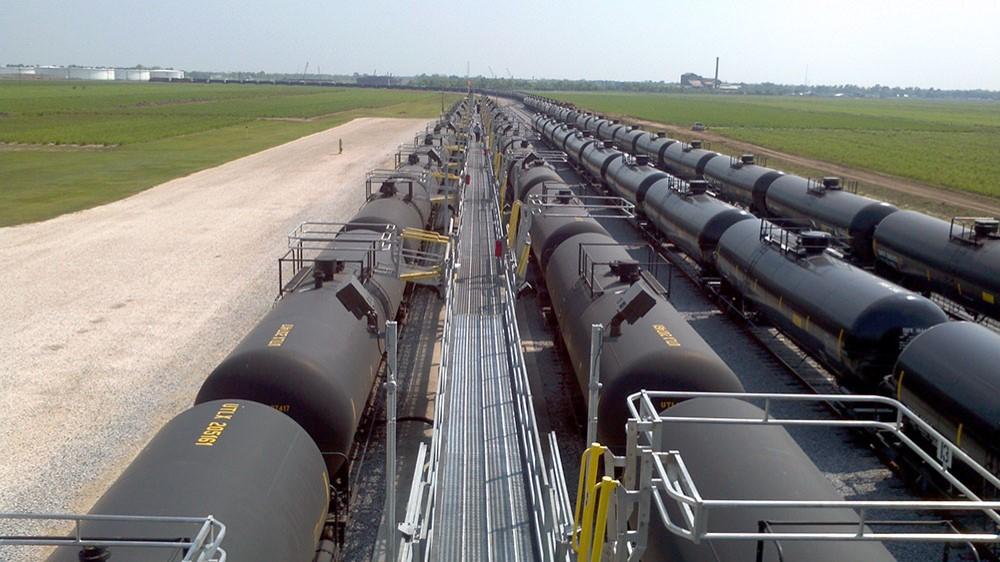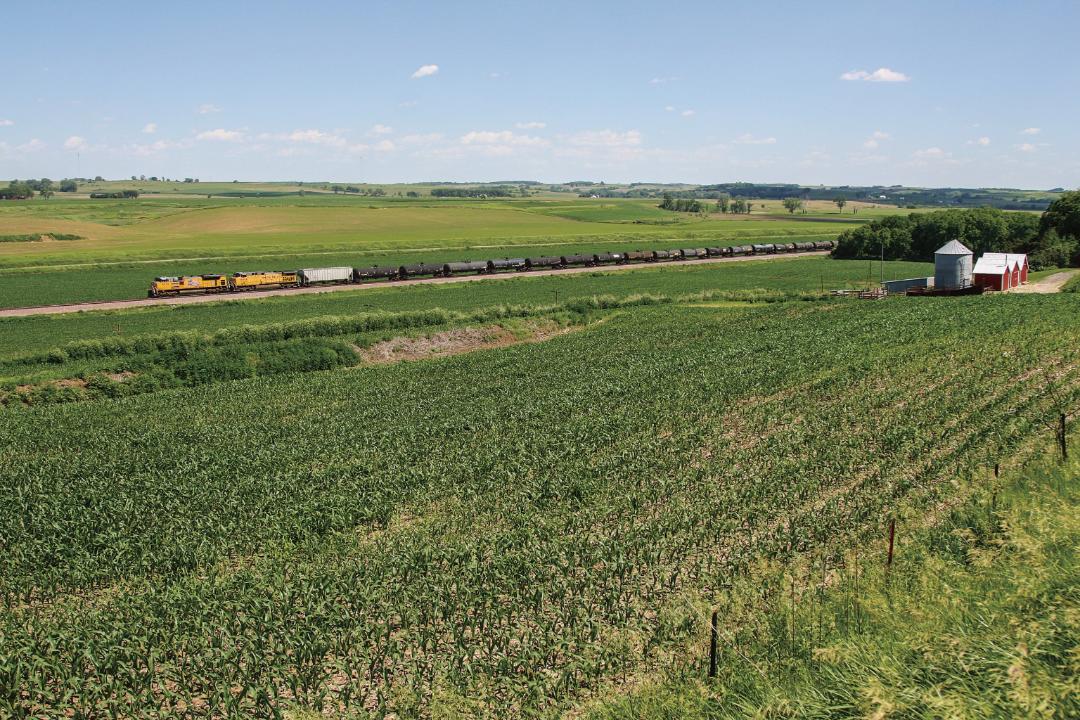When Carbon Dioxide emissions are captured, it reduces greenhouse gas (GHG) emissions and benefits industrial facilities. Learn how Union Pacific supports the Carbon Capture, Utilization and Storage markets.
What Is Carbon Capture?
Carbon capture is the process of trapping carbon dioxide (CO2) emissions to reduce greenhouse gas emissions in the atmosphere and from industrial facilities. This happens in a couple of ways:
- Direct air capture is the process of capturing CO 2 directly from the atmosphere.
- Point source capture is the process of capturing CO 2 where it is generated. Point source capture traps CO 2 generated by industrial facilities or power plants, including natural-gas-fired power plants, steel mills, cement plants and refineries before it enters the atmosphere.
What Happens to Captured Carbon Dioxide?
Once captured, CO2 takes one of two paths:
- Carbon Storage, where carbon dioxide is permanently stored far underground using a process called carbon sequestration.
- Captured Carbon Utilization, where CO 2 is most commonly reused to extract oil and make industrial materials.
Because captured CO2 can take one of these two paths (utilization and storage) the term for it the process is “carbon capture, utilization and storage” (CCUS).
How Is Captured Carbon Dioxide Used?
Captured CO2 has more uses than one might think. The most common use is for oil extraction, but it can also be used to make industrial materials, carbonate beverages, and dry ice for food storage. Other household product uses are emerging as well.
- Energy industry: CO 2 can be used for enhanced oil recovery (EOR). When an oil field appears to be depleted, EOR extracts additional amounts of oil that would otherwise be left behind by conventional methods like drilling. EOR works by injecting water, chemicals or gases (one of which can be CO 2) into an oil reservoir. Doing so makes the oil less viscous, thereby increasing its ability to flow to the well. Carbon emissions can also be used to make natural gas and fuels.
- Industrial materials: Recovered carbon dioxide can be used to make industrial materials like plastics, fertilizer, and building materials, including cement, plasterboard and bricks.
- Food and beverage industry: Captured CO 2 can undergo a purification process so it can be used to carbonate beverages, preserve produce and grains, and make dry ice that is used to keep frozen foods cold during shipping.
- Emerging uses: A few companies are using recovered CO 2 to make household products like bleach, antifreeze, baking soda, clothing, inks, paints and even diamonds.
What Are the Benefits of Carbon Capture?
As a GHG, the primary advantage of CO2 is preventing these emissions from entering the atmosphere and lowering the carbon intensity of industrial operations.
Decarbonization is very difficult in industrial sectors like manufacturing and power generation because they rely on a large amount of energy to function. The energy sector is by far the largest contributor of global greenhouse gas emissions, totaling 73%. Carbon capture can reduce these emissions and is an important part of achieving the goals laid out in the Paris Agreement: reduce emissions 45% by 2030 and reach net zero emissions by 2050.
Since carbon capture started in 1972, more than 200 million tonnes of CO2 have been captured. Currently, CCS projects store about 45 million tons of CO2 per year, which is roughly equivalent to CO2 emissions from 10 million passenger cars.
Is There Funding for Carbon Capture?
The Infrastructure Investment and Jobs Act created federal funding and tax credits for carbon capture activities, including:
- Carbon Dioxide Transportation Infrastructure Finance and Innovation Program (CIFIA): $2.1 billion for FY2022-FY2023
- Commercial large-scale carbon storage projects: $2.5 billion for FY2022-FY2026
- Development of four Regional Direct Air Capture Hubs: $3.5 billion for FY2022-FY2026.
The Inflation Reduction Act, signed into law on August 16, 2022, includes $370 billion in energy related investments; carbon capture and storage projects are also eligible for these funds.
How Do You Ship Captured Carbon Dioxide?

Liquid carbon dioxide ships by rail in tank cars
Before CO2 is shipped, it is compressed into a liquid-like substance so it can be transported to storage sites or manufacturers.
Liquid carbon dioxide can be shipped by:
- Rail
- Pipeline
- Trucks
- Vessel
Currently, the United States only has 5,000 miles of existing CO2 pipelines, which are located in specific areas serving the energy sector. Compared to the 300,000 miles of pipeline devoted to transporting natural gas, it’s clear CO2 pipelines are limited in which origins and destinations they can serve. More pipeline projects are in the works, but as new carbon capture projects emerge, other shipping methods will need to be used.
Among the other options, shipping by vessel tends to be the most expensive, followed by trucks. Trains typically have a lower cost per ton mile than trucks and are also the most environmentally responsible way to ship freight by land. Compared to trucks, trains cut GHG emissions by 75%.
Because CO2 is an inert gas that is not flammable it can ship safely in tank cars. Railroads have been shipping carbon dioxide for years.
Learn More
Learn more about shipping carbon by rail, and if you are interested in reducing carbon emissions, lowering your carbon intensity score or capitalizing on the available tax credits, contact a member of our Carbon by Rail team for further discussion.









